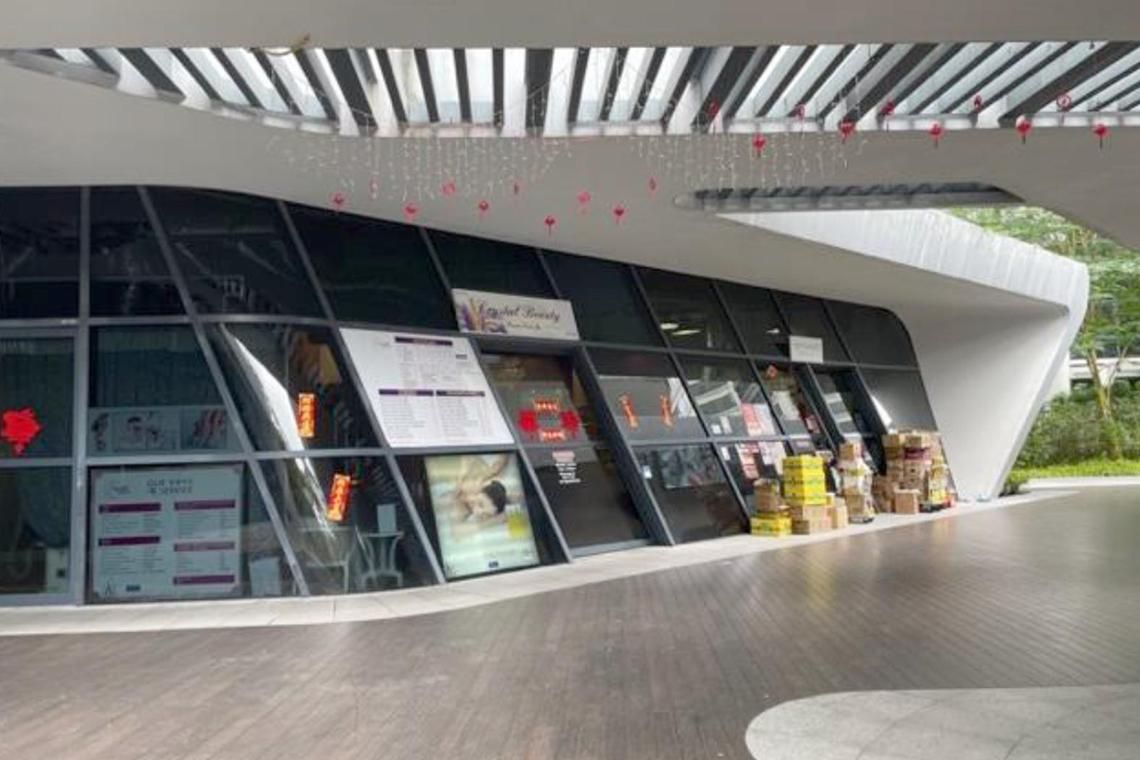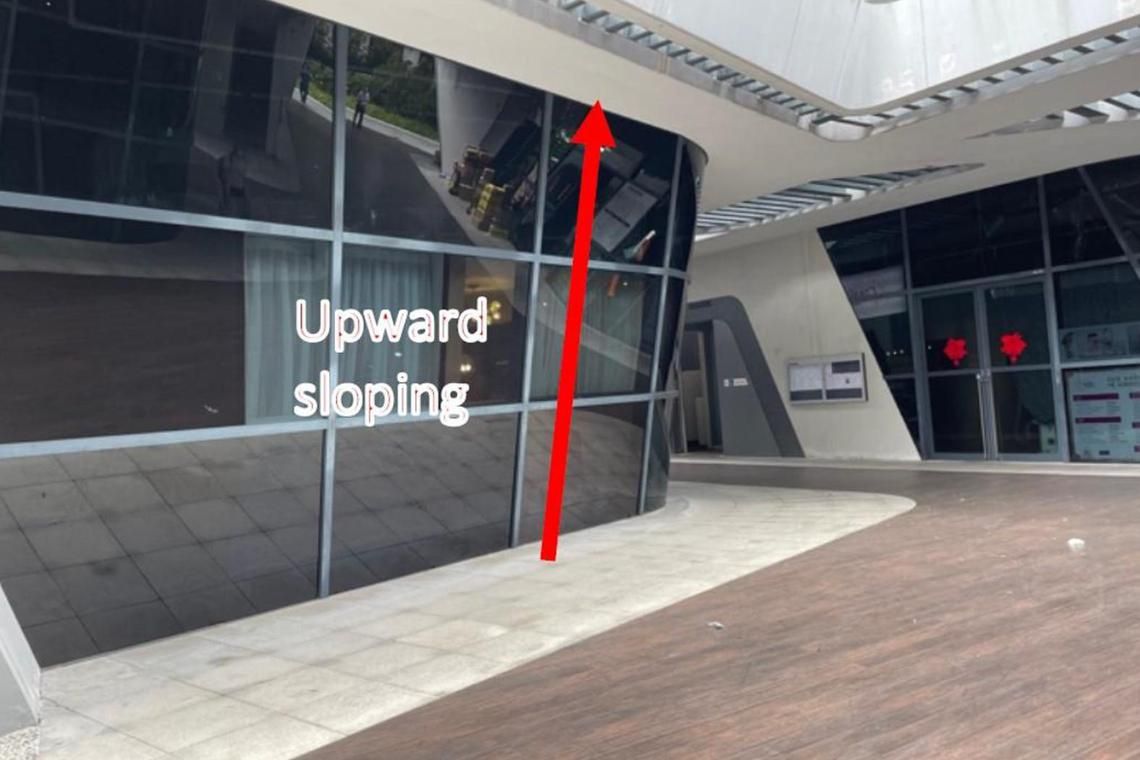SINGAPORE – A beauty salon owner bought a commercial unit at D’Leedon condominium for nearly $1.6 million, assuming that the size of the premises was 818 sq ft.
This was based on past transaction history data on two leading property listing portals, as well as a title search, which corroborated the square footage.
However, the usable floor area of the unit turned out to be just 619 sq ft.
The discrepancy arose because of the unique manner in which the lot area is calculated for properties with sloping walls, meaning there is a difference between ceiling and floor areas.
For such properties, the lot area – as set out in the title documents and commercial listing portals – is calculated based on the larger of the two.
In this case, it was the ceiling area that was 818 sq ft.
The buyer, Madam Pan Ying, initially sued five parties over the discrepancy: her real estate agent Jasmine Xu, Ms Xu’s agency ERA Realty Network, the vendor PLS Holdings, the vendor’s real estate agent Eric Kwek, and Mr Kwek’s agency PropNex Realty.
The lawsuit was brought in the name of Madam Pan’s company, Crystal Beauty, of which she is the sole director and shareholder.
The suit against the vendor was discontinued as the firm has since been struck off, while a confidential settlement was reached with Mr Kwek and PropNex.
Madam Pan sought damages of more than $590,000 from Ms Xu and ERA.
She claimed that Ms Xu had misrepresented to her that the “usable floor area” was 818 sq ft and that the agency was vicariously liable for Ms Xu’s acts.
On May 8, the High Court dismissed the lawsuit.
In his written judgment, Judicial Commissioner Mohamed Faizal said there was no evidence that Ms Xu had made any representations, whether explicit or implied, that the usable floor space was 818 sq ft.
He added that Ms Xu had conducted all the typical due diligence checks; she had cross-checked the numbers provided by the vendor against the EdgeProp portal.
The case was so rare that the joint expert witness for the trial, real estate agent Tay Kah Poh, who is also an adjunct associate professor at NUS Business School, confessed he had never seen such a situation before.
Prof Tay said the situation was so unusual that it would not have been covered in the conventional courses a person would have to typically undergo before becoming a licensed estate agent.
The judge said this case “reflects the reality that both property agents and buyers should remain vigilant”.
He said: “Given the novelty of the situation, all the parties were caught unaware about the disparity between floor space and the strata lot size listed on the title search, and there was little a conscientious property agent could have done to have been more alive to a problem that simply was not viewed as a concerning feature in Singapore’s property market.”
Madam Pan had operated a beauty salon at D’Leedon since 2015.
In September 2018, Madam Pan told Ms Xu, who was a patron of the salon, that she was interested in larger premises to expand the business.
The unit directly across the corridor from her current shop was identified as a possible location.
The parties disagreed whether there had been a formal physical inspection of the interior of the unit at the time of the purchase in early 2020.
At the time, the unit was tenanted and used as a clinic.
It was only in late 2021, when an interior designer started to do proper measurements for renovations, that the size of the actual usable floor area became apparent.

The current premises bear the opposite configuration with downward-sloping walls, such that from a front view, it is shaped as a trapezoid, with the ceiling smaller than the floor.PHOTO: COURT DOCUMENTS
Madam Pan contended that the discrepancy in size significantly hampered the salon’s expansion plans.
She said the salon is now forced to operate from both the existing premises and the new premises.
The amount claimed comprised $203,400 in purported savings on operational costs if she did not have to maintain the older shop, and a sum of $387,855.38 after accounting for the pro-rated price for a 619 sq ft property.
In his judgment, the judicial commissioner noted that the written documents setting out Madam Pan’s claims of misrepresentation were “extremely vague”.
The judge said text messages presented by Madam Pan, of discussions with Ms Xu from 2020 to 2022, did not support her claim that the latter had made the purported representations.
On the contrary, the messages showed that both of them had been “jointly misled” by the developer’s marketing of the unit as being of 818 sq ft, said the judge.
This common understanding appeared to morph only in March 2022, when Madam Pan decided to sue Ms Xu after she was told by surveyors that there was nothing wrong with how the developer had calculated the strata lot area of the unit, he said.
Join ST’s WhatsApp Channel and get the latest news and must-reads.







